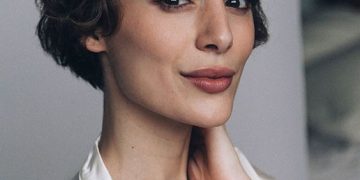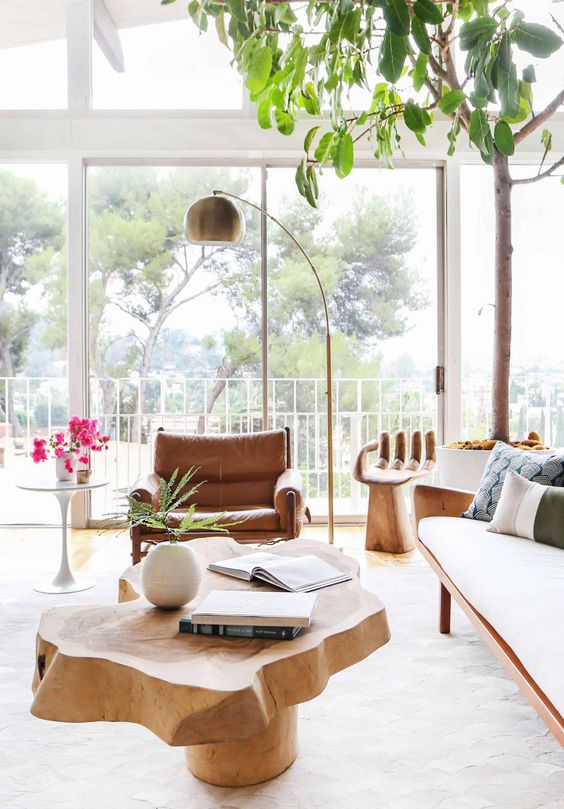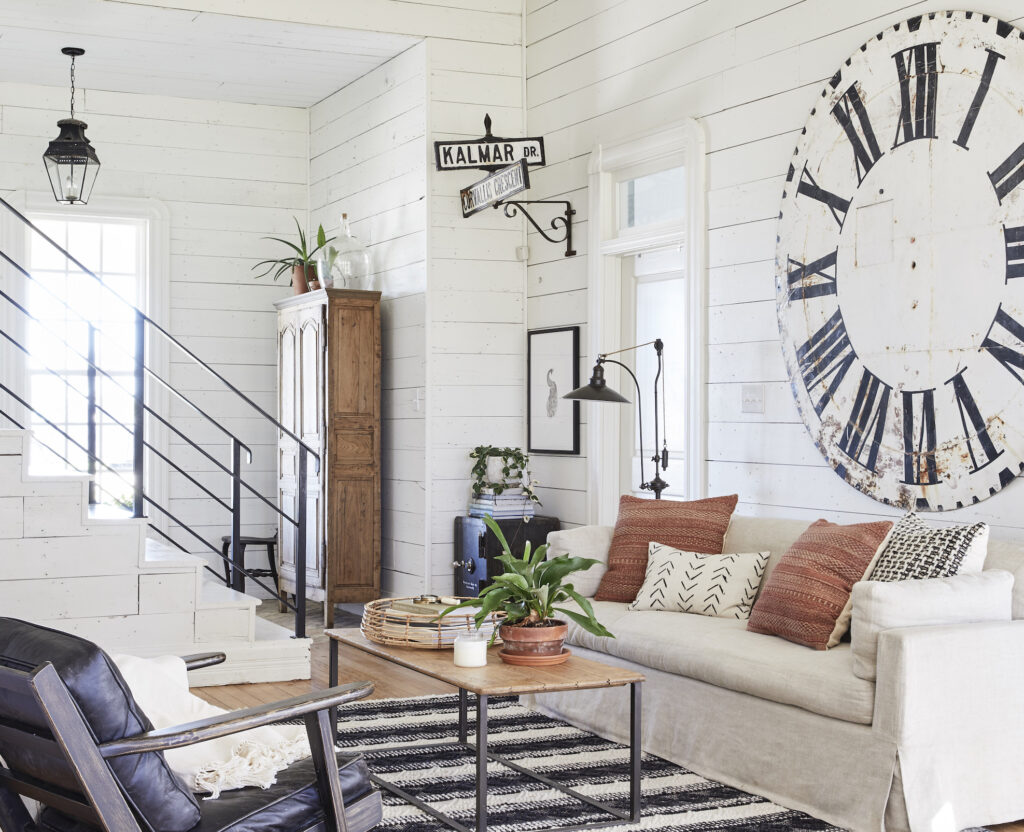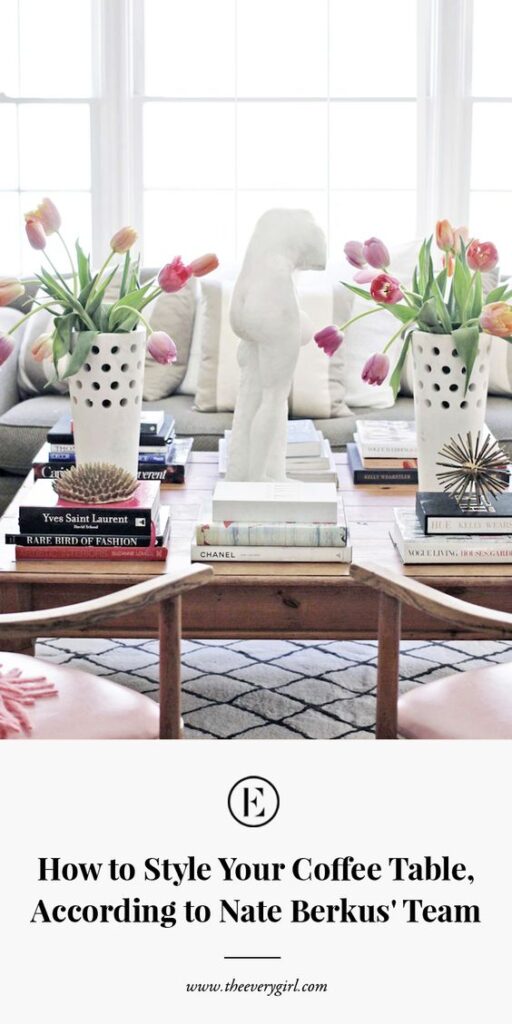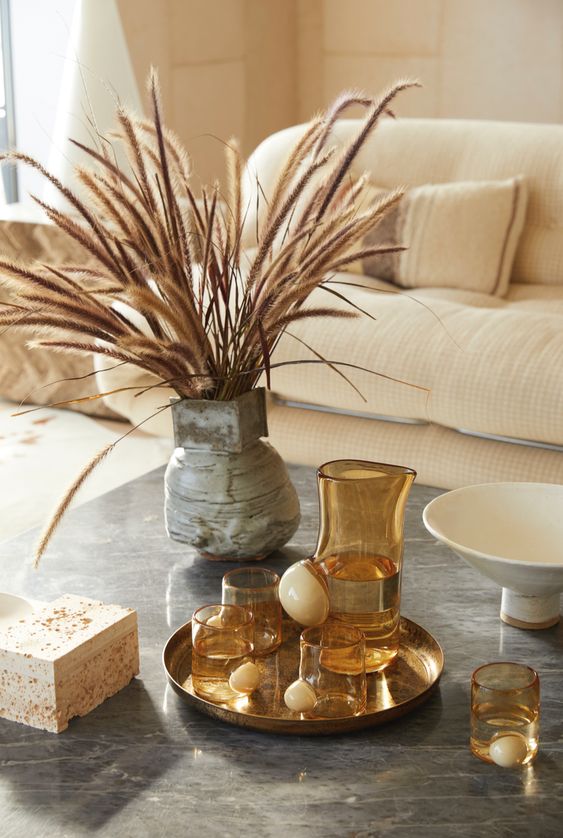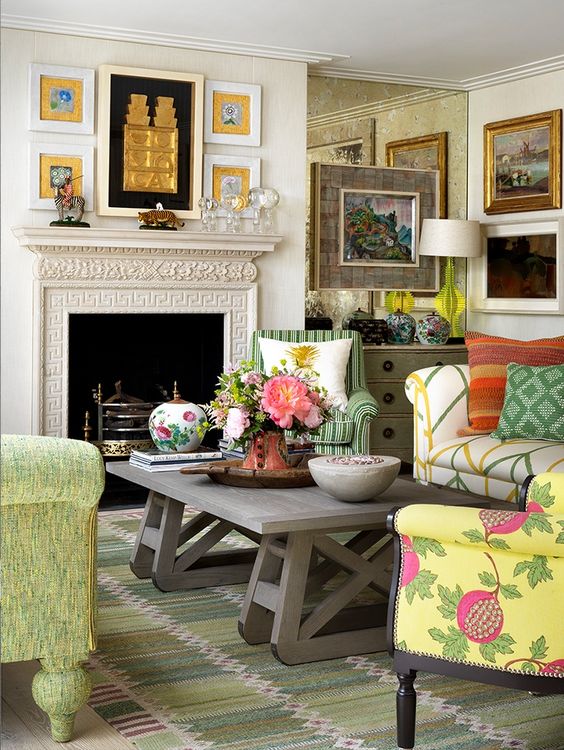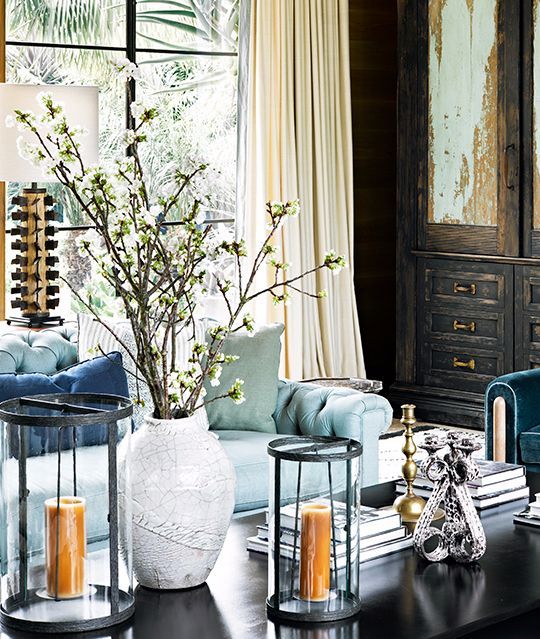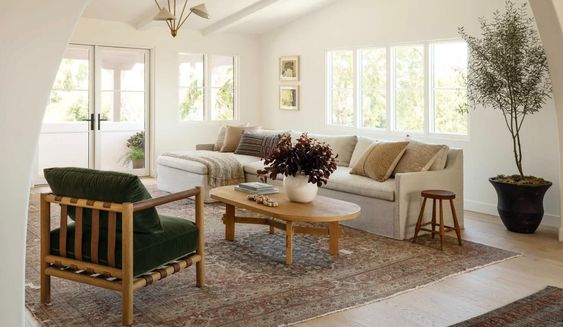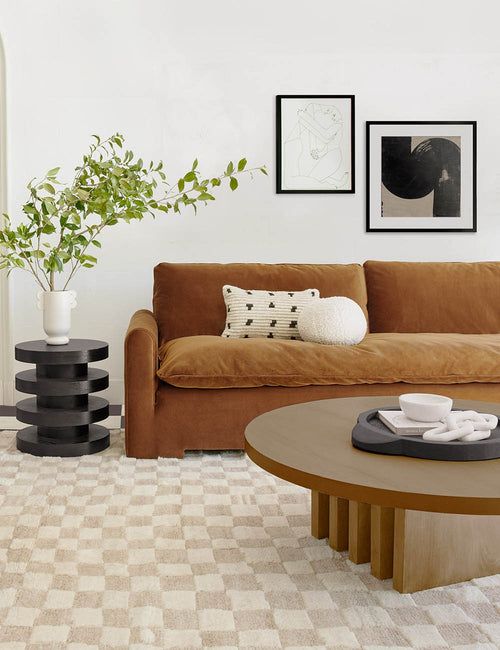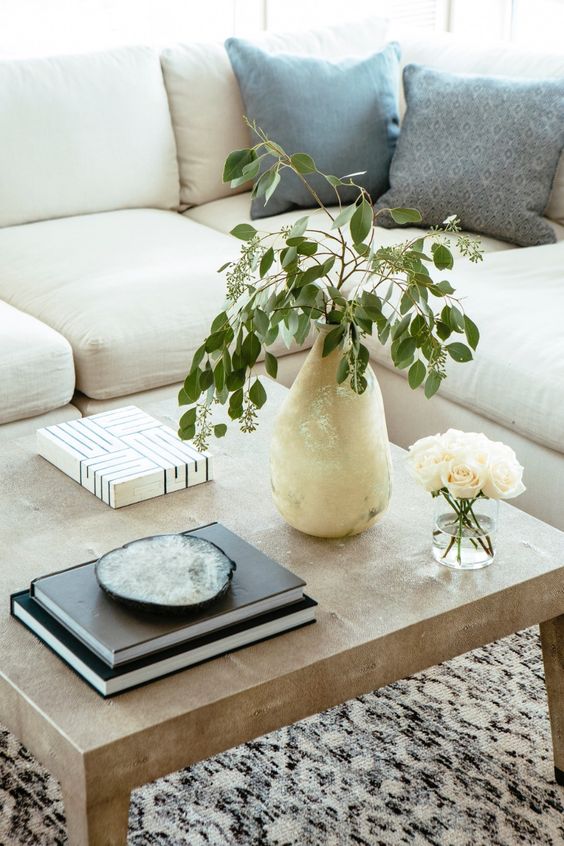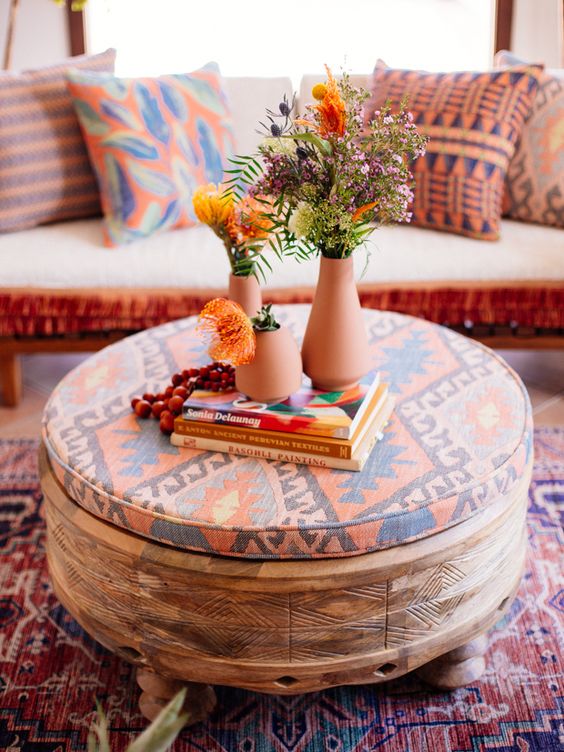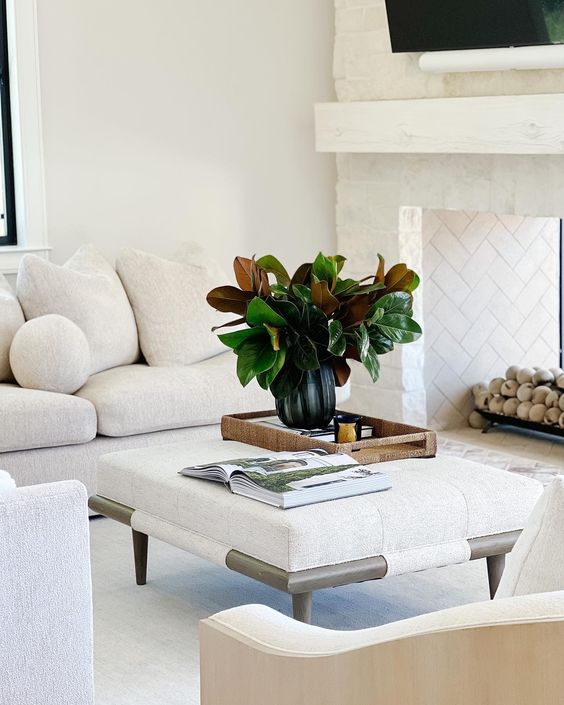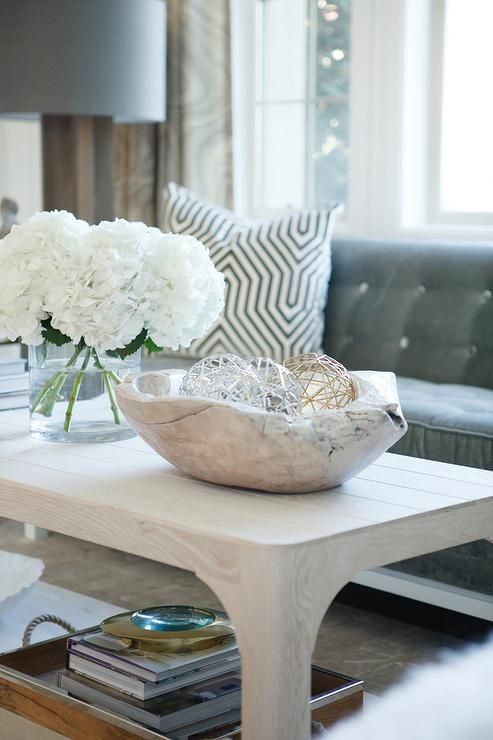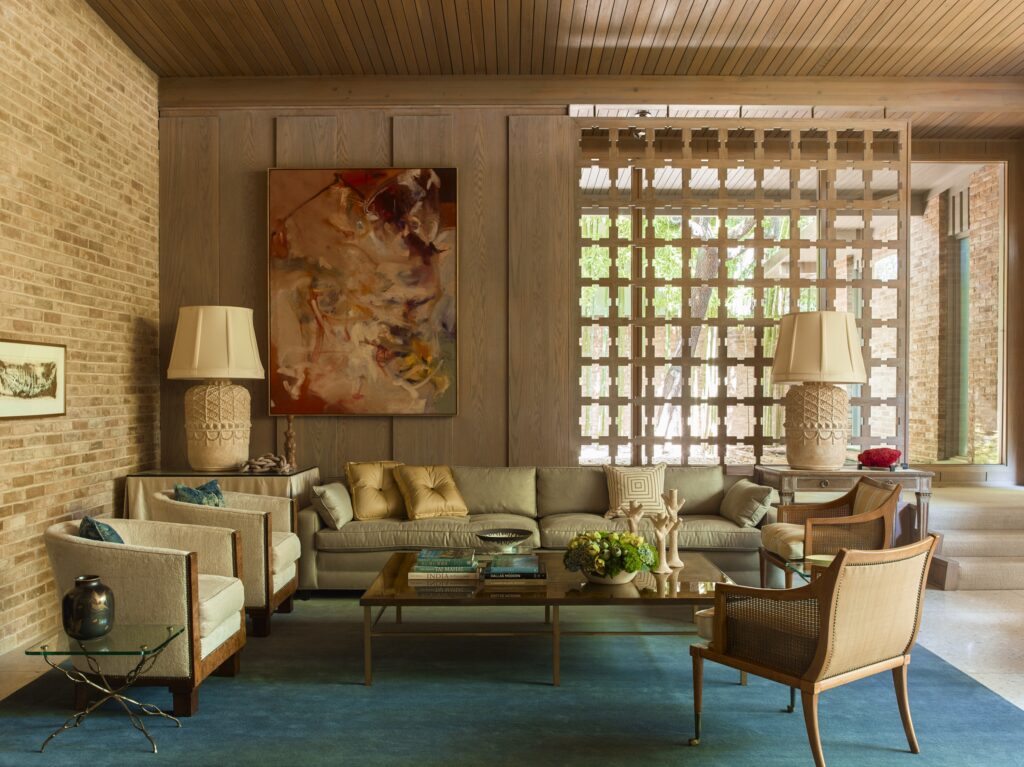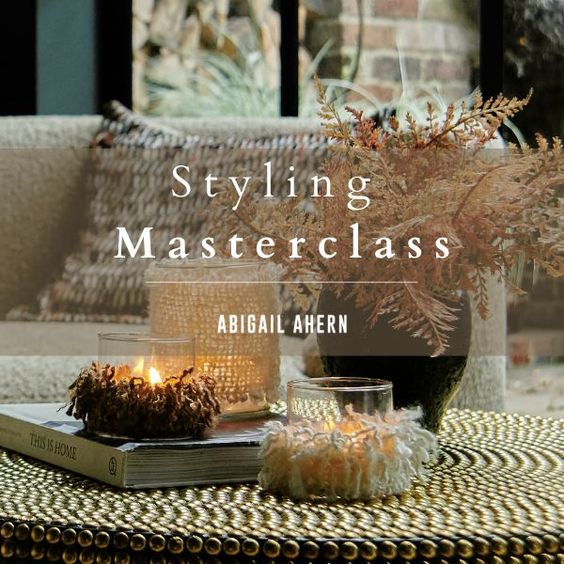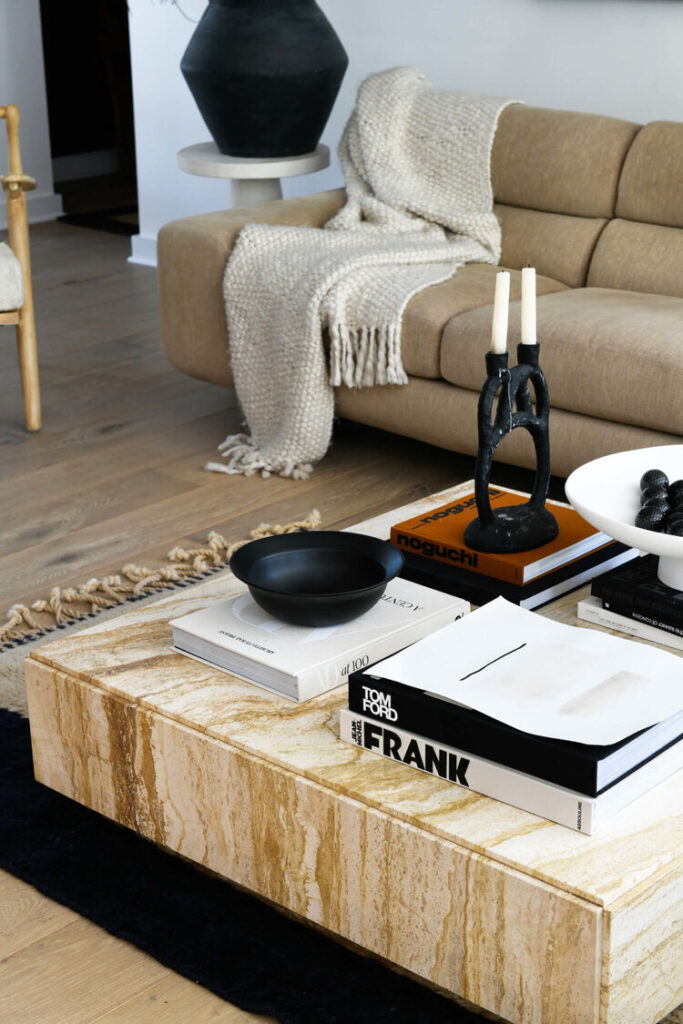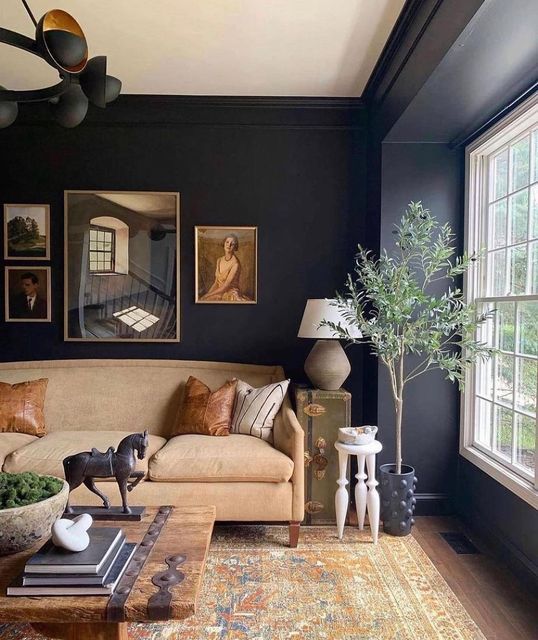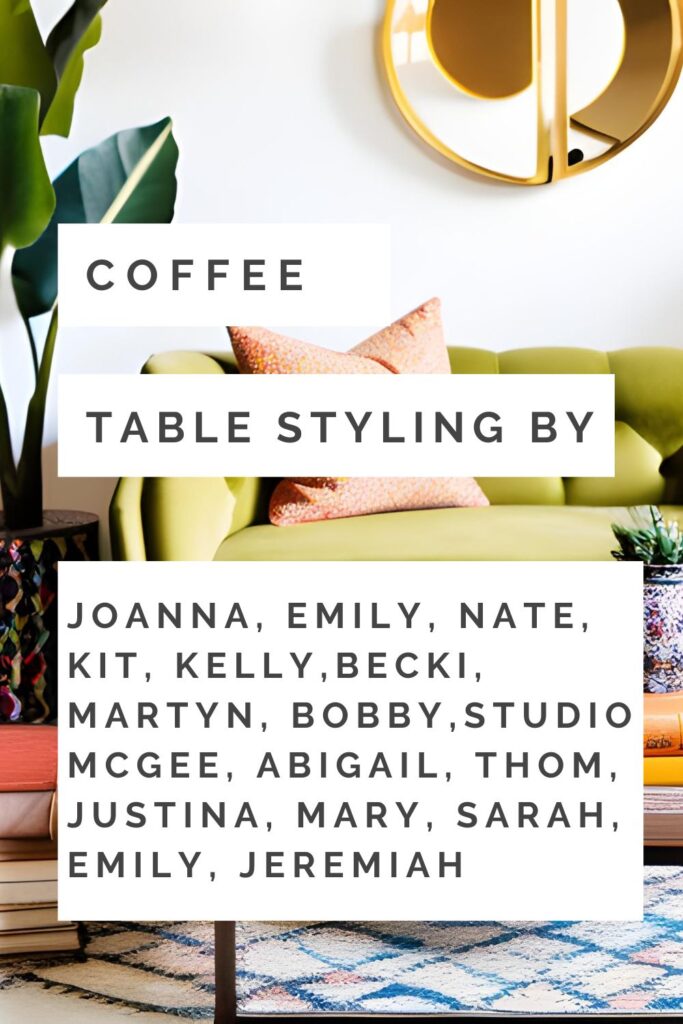
Coffee table styling by numbers would be such a joy, but here is something almost as good; creating your coffee table styling according to some of the leading interior designers and stylists.
There’s something beautiful about the perfect interior design vignette; it grounds the space with a focal point, and a coffee table, ottoman or even side table is a perfect opportunity to add a chic feature to your living space and still keep it cozy. In this blog post we looking at using your coffee table as a centerpiece to tell a story about you and your home, in your own unique way.
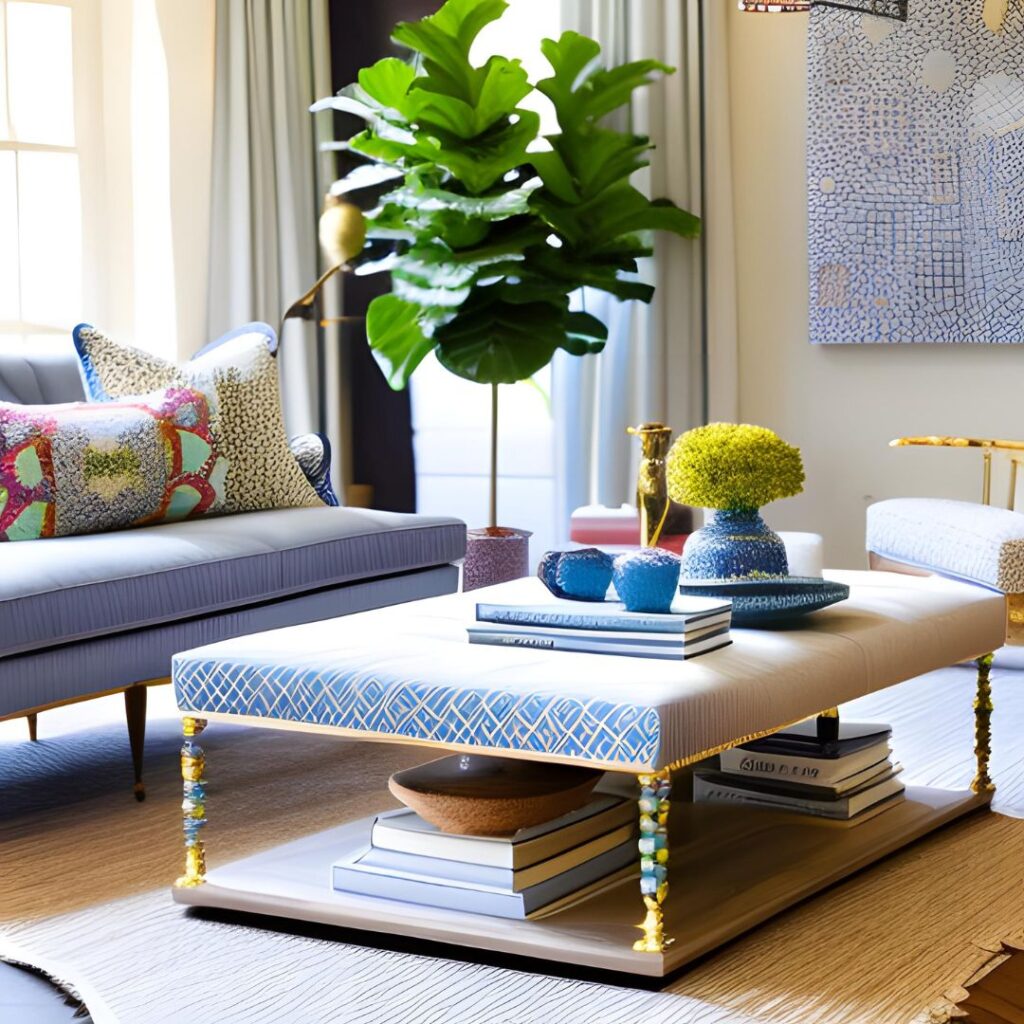
Bringing pieces together on a coffee tabletop in a balanced and artistic way is a playful way that makes a statement. Generally close to a sofa, its also a functional piece of furniture holding remote controls, books and magazines. With so many ways to style it, the coffee table is often a conversation starter, but the question most people ask is ‘How do I style a coffee table like a designer?’ (See the answer below!)
Let’s Start with 10-Step Keep-It-Simple Tips to Coffee Table Styling:
Step 1: Find your color palette: Choose a color palette you love, whether it’s neutral and earthy like Joanna Gaines or vibrant and bold like Kelly Wearstler. It should line up with your surrounding decor.
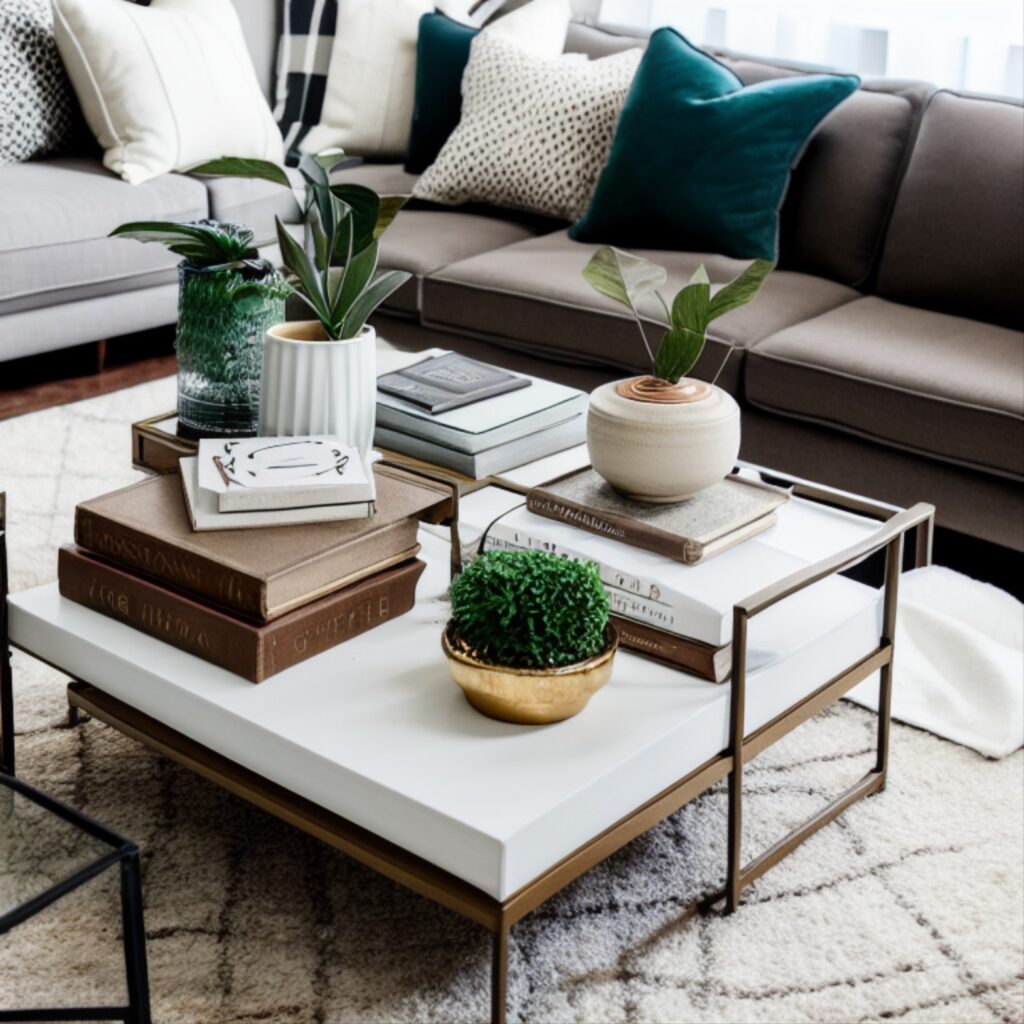
Step 2: Choose your items: Choose a hero item; one main piece that your eye will immediately move to. Its often a larger and swoonworthy. Add a few elements to complete your look, such as farmhouse vintage for a Joanna Gaines-inspired look or eclectic, unique pieces for an Emily Henderson vibe.
Step 3: Select your design: Decide whether you want a rustic charm or playful and eclectic. This will guide your overall approach.
Step 4: Materials and textures: Use a mix of materials and textures that say, Studio McGee might use like woven baskets and raw woods, or Nate Berkus might have metallic accents and plush fabrics.
Step 5: Plan the look: How will you arrange your objects? Consider the scale and proportion of each item and how they will look next to one another.
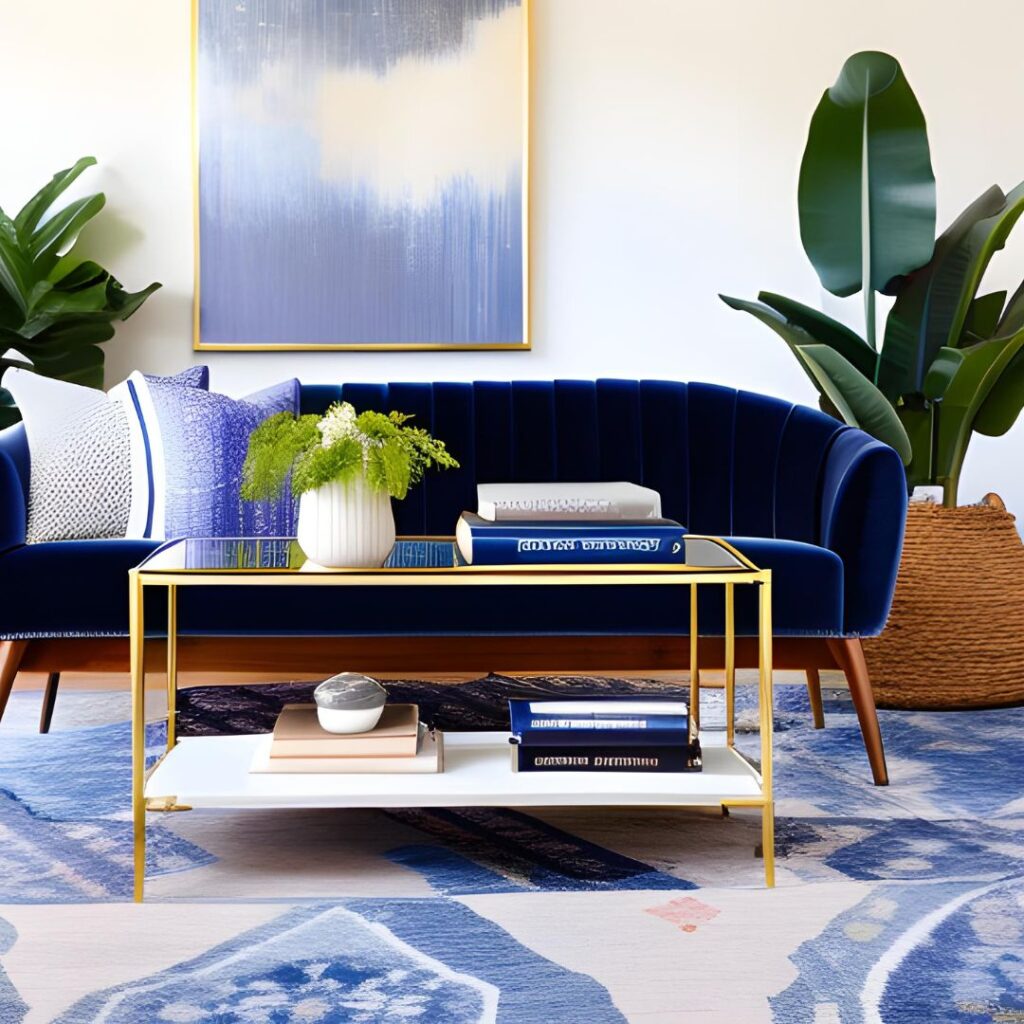
Step 6: Balance and symmetry: Aim for a balanced and symmetrical look.
Step 7: Layer and texture: Stack books, use textured fabrics, or natural elements like plants or botanical motifs. Get playful.
Step 8: Functionality: Choose objects that also serve a purpose; even if the purpose is to be fashionably eclectic. Flat surfaces like plates, bowls or containers help with storage or organization.
Step 9: Scale and proportion: Arrange pieces to create a dynamic look and adjust accordingly.
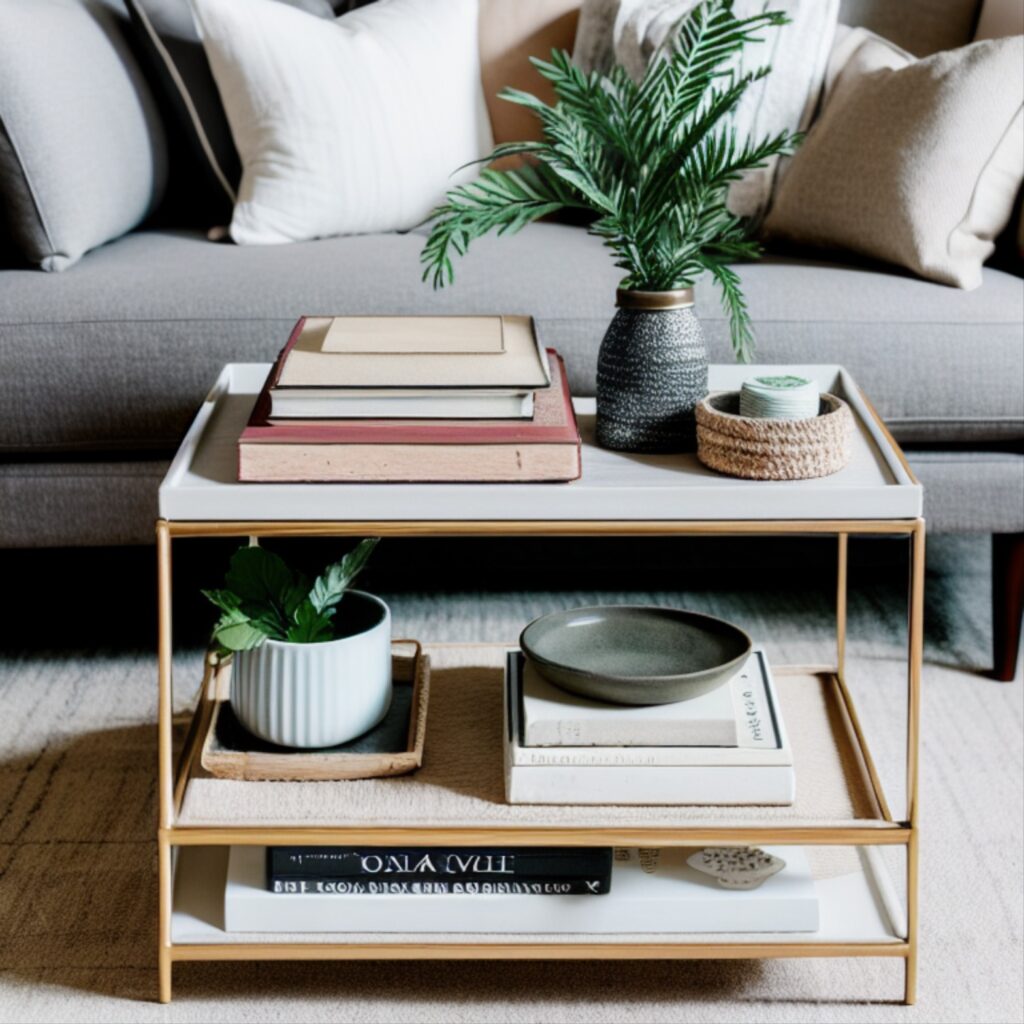
Step 10: Assess: Step back and make tweaks so your vignette feels harmonious and visually pleasing.
Collect a Few Coffee Table Styling Accessories:
- Stacks of books, coffee table books and magazines
- Vases
- Bowls
- Tray, platter or containers
- Succulent
- Candles, candle holders
- Coasters
- Small stack items
- Sculptural objects
- Throws
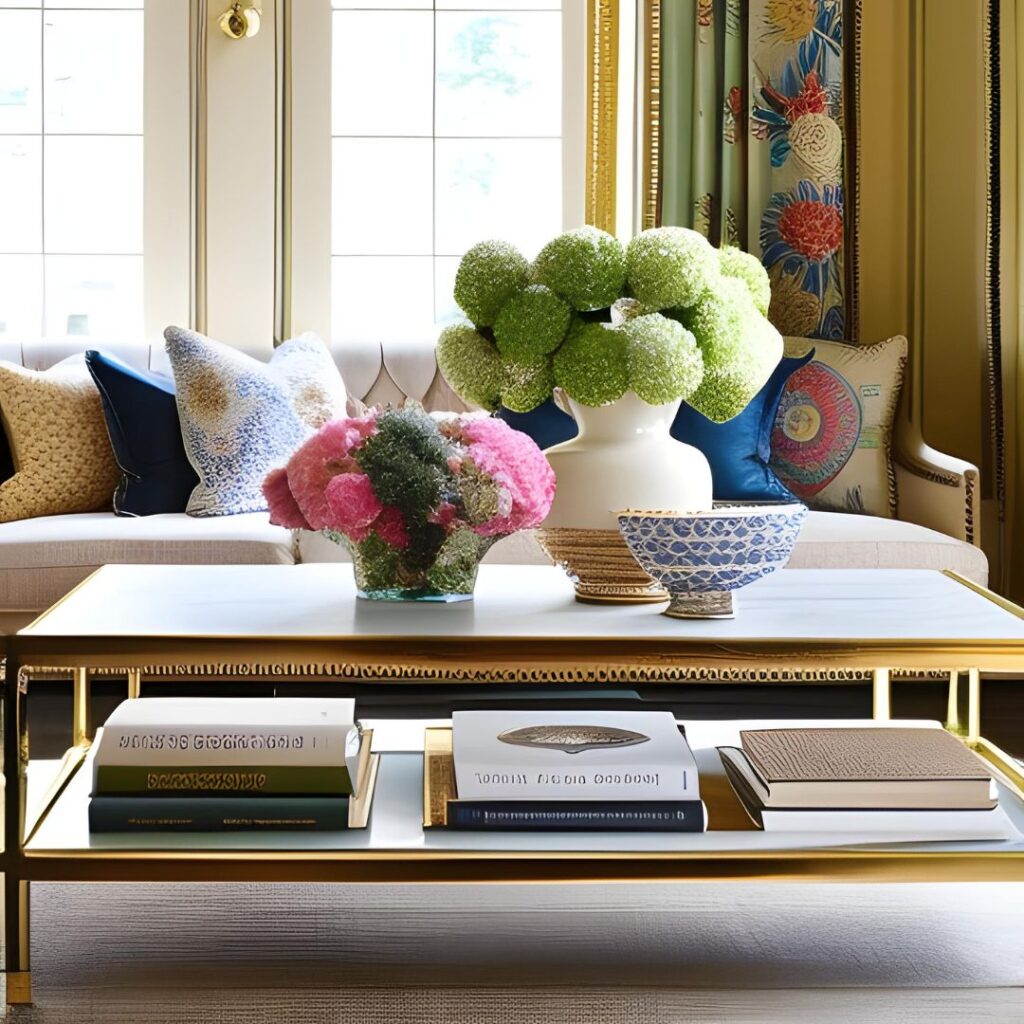
Use a combination of these items on a two-tiered coffee table, round coffee table, ottoman, glass top, rectangle or square, small or big coffee table. You can apply these ideas to mantles, sideboards, and entry tables to complete your home decor living room look and elevate your design.
Remember, you can make any room into a show stopper by piecing together accessories, textiles, colors and furnishings to create relaxing and unforgettable spaces.
17 Designers & Stylists Coffee Table Styling That’s Outside the Box
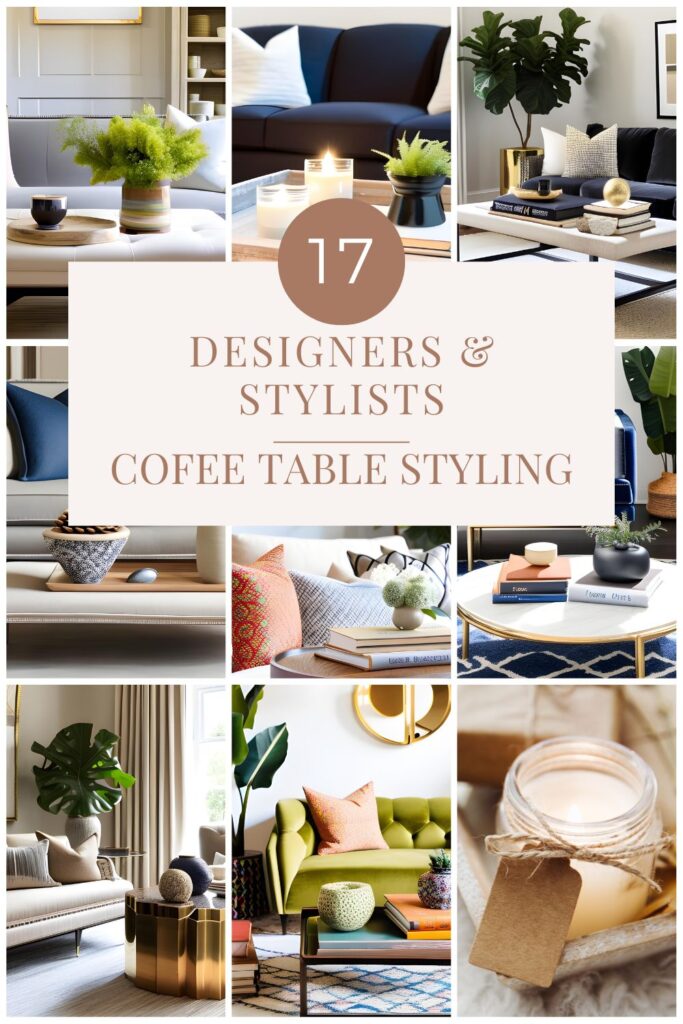
These designers are well-known for their coffee table styling decor ideas. They create eye-catching vignettes of vintage, organic or curated designs. Here’s a summary; then simply scroll down until you find the designer you love.
- Emily Henderson: Playful, eclectic, color mixing.
- Joanna Gaines: Rustic charm, curated simplicity.
- Nate Berkus: Sophisticated, elegant, modern luxury.
- Kit Kemp: Whimsical, layered, vibrant eclecticism.
- Martyn Lawrence Bullard: Opulent, global, maximalist aesthetic.
- Kelly Wearstler: Bold, dramatic, glamorous design.
- Bobby Berk: Contemporary, functional, sleek design.
- Sarah Sherman Samuel: Minimalist, serene, organic beauty.
- Jeremiah Brent: Dramatic, elegant, refined styling.
- Justina Blakeney: Bohemian, vibrant, natural abundance.
- Thom Filicia: Comfortable, tailored, classic modernity.
- Mary McDonald: Glamorous, timeless, refined elegance.
- Emily Summers: Sophisticated, understated, relaxed luxury.
- Studio McGee: Fresh, clean, modern farmhouse style.
- Abigail Ahern: Moody, eclectic, unconventional designs.
- Leanne Ford: Minimalist, airy, white aesthetics.
- Becki Owens: Modern, warm, coastal-inspired designs.
Emily Henderson
- Color Palette: Emily Henderson is loved for her color combinations. She might incorporate a mix of neutral tones with pops of vibrant colors to create energetic and playful coffee table styling.
- Key Elements: a mix of vintage finds, unique objects, and art pieces plus flowers or greenery for a touch of natural beauty.
- Approach: visually dynamic; an eclectic and grouped approach mixing different heights, shapes, and textures.
- Materials and Textures: a blend of natural elements, such as wood or woven accents, along with modern or metallic touches.
- Arrangement: a mix of stacked books, curated objects and vignettes arranged in an organic and free-flowing manner.
Joanna Gaines
- Color Palette: Joanna Gaines loves a neutral and earthy color palette; using shades of whites, beiges, grays, and warm browns and even introducing subtle pops of color.
- Key Elements: Joanna uses coffee table styling elements that create a strong sense of comfort and nostalgia, like vintage books, items with personal significance and natural elements like dried pine cones or small potted plants.
- Approach: warm and inviting, balanced and symmetrical and placed intentionally for a cohesive and harmonious look.
- Materials and Textures: natural materials like wood, woven fibers, and ceramics for warmth and texture; mixing smooth and rough surfaces.
- Arrangement: intentionally arranged with attention to the overall composition.
Nate Berkus
- Color Palette: Nate Berkus often uses a neutral color palette; mostly shades of whites, creams, grays, and warm taupes, occasionally introducing rich jewel-toned accents.
- Key Elements: sculptural objects, books, candles, and personal artifacts with homage to the homeowner’s personality, plus fresh flowers or small plants to add a touch of nature.
- Approach: elegant and sophisticated with attention to the position of objects to create a visually balanced and thoughtfully composed arrangement.
- Materials and Textures: visually luxe; mixing materials and textures such as metallic accents, as well as soft and luxurious textures, such as velvet or faux fur.
- Arrangement: carefully curated; items are placed to create a sense of balance and visual impact using composition and negative space.
Kelly Wearstler
- Color Palette: Kelly Wearstler embraces a bold and contrasting color palette. She combines vibrant hues with unexpected color combinations, such as dramatic blacks, vivid blues, fiery oranges, and pops of metallic accents like gold or brass.
- Key Elements: abstract sculptural objects, art books, and unique decorative items along with bold patterns or graphic prints.
- Approach: eclectic, artistic and bold; mixing shapes, textures, and heights. Visually dynamic and interesting, Kelly has a fearless and avant-garde quality.
- Materials and Textures: a mix of materials and textures, combining smooth surfaces with textural elements. She loves using glass and polished metals, as well as textured fabrics or natural elements like stone or wood.
- Arrangement: carefully curated but with a spontaneous feel. Objects are placed in an intentionally abstract manner, creating an artful and visually stimulating display.
Kit Kemp
- Color Palette: Kit Kemp is loved for her unexpected combinations of vibrant, eclectic color palettes, jewel tones and vibrant pastels.
- Key Elements: unique, refined and whimsical accessories, objects, art pieces, or ceramics along with fresh flowers or potted plants for a touch of nature.
- Approach: Playful and grouped; combining objects with different heights and shapes for an asymmetrical, balanced arrangement and mixing patterns and textures.
- Materials and Textures: a wide range of materials and textures, from plush fabrics to polished metals plus a mix of velvet, woven textiles, and metallic accents.
- Arrangement: visually dynamic, with objects placed in a way that encourages exploration and discovery. She may use trays or books as a foundation for other objects.
Martyn Lawrence Bullard
- Color Palette: Martyn Lawrence Bullard loves rich and diverse color schemes often combining bold and vibrant colors, such as jewel tones, with earthy neutrals.
- Key Elements: curated objects, artifacts, and textiles from different cultures, showcasing his love for travel and cultural diversity.
- Approach: opulent and luxurious with attention to detail to create visually grand and sophisticated arrangements.
- Materials and Textures: a mix of materials and textures; luxurious fabrics, intricate carvings, metallic accents, textured surfaces.
- Arrangement: carefully curated and organized. A sense of order and balance by grouping objects in a deliberate manner.
Bobby Berk
- Color Palette: Bobby Berk loves a neutral color palette. He uses crisp whites, soft grays, and warm taupes, allowing objects and textures to take center stage.
- Key Elements: contemporary and eclectic elements; unique artwork, and curated pieces that show the owner’s personal taste.
- Approach: well-balanced and thoughtfully composed; a sense of order and simplicity with interesting or unusal elements.
- Materials and Textures: a mix of materials and textures like sleek metals, glass, acrylics, and natural elements like wood or stone for visual contrast and tactile appeal.
- Arrangement: carefully curated and intentionally arranged; clean, balanced, visually pleasing with attention to negative space.
Sarah Sherman Samuel
- Color Palette: Sarah Sherman Samuel is loved for creating serene and tranquil spaces; using a soft and muted color palette, shades of whites, blush pinks, warm grays, and pale blues.
- Key Elements: minimalistic, contrasting organic elements; natural materials like raw woods, rattan, and ceramics, along with softer textures like linen and velvet
- Approach: vignettes focused on simplicity and tranquility. Arrangements feel balanced and serene, using negative space.
- Materials and Textures: natural and tactile materials; ceramics, baskets, and organic textiles to add visual and tactile interest.
- Arrangement: curated, minimalist and uncluttered; arranged in a way that feels purposeful, allowing each item to shine.
Jeremiah Brent
- Color Palette: Jeremiah Brent is loved for his sophisticated and moody color palette; using deep charcoals, rich blues, warm browns, and metallic accents like gold or brass to create a luxurious and dramatic atmosphere.
- Key Elements: a mix of modern and vintage elements, sculptures, luxurious textures like velvet, leather, and silk.
- Approach: drama and elegance. Carefully curated objects are arranged asymmetrically and strategically for visual impact.
- Materials and Textures: a variety of materials and textures such as plush textiles, reflective surfaces, and natural elements like wood or stone.
- Arrangement: composed and visually captivating; playing with varying heights, asymmetrical compositions, and negative space.
Justina Blakeney
- Color Palette: Justina Blakeney loves vibrant and bohemian color palettes, using earthy tones like terracotta, warm yellows, deep greens, and vibrant blues, with bold patterns and prints.
- Key Elements: eclectic and global influences; natural materials like rattan, jute, and macramé, lush floral and botanical motifs.
- Approach: abundance, free-spirited, organic; grouped objects with different sizes, shapes, and textures.
- Materials and Textures: woven elements, textured ceramics, and natural fibers for visual and tactile interest.
- Arrangement: an organic approach, arranging objects that feels free-flowing and unstructured, creating a sense of movement, spontaneity and whimsy.
Thom Filicia
- Color Palette: Thom Filicia is loved for his sophisticated color palette, mixing neutral tones, earthy hues, and pops of color, creating a harmonious and inviting atmosphere.
- Key Elements: eclectic and refined. A blend of curated objects; art books, sculptures, and ornate accents.
- Approach: polished and curated for elegance and sophistication while remaining balanced and cohesive.
- Materials and Textures: smooth ceramics, polished metals, and luxurious fabrics.
- Arrangement: precision, clean lines and symmetrical arrangements creating a well-balanced and visually pleasing display.
Mary McDonald
- Color Palette: Mary’s loves a mix of bold and rich colors, vibrant jewel tones, contrasts, and intricate patterns for a striking look.
- Key Elements: opulence and elegance using glamorous accessories; decorative boxes, art objects, and luxurious textiles.
- Approach: glamour and sophistication. Carefully curate objects with intricate details and bold design elements.
- Materials and Textures: elevated materials and textures such as velvets, silks, lacquered finishes, and metallic accents.
- Arrangement: refined and intentional, creating focal points, balanced compositions, and carefully positioned items.
Emily Summers
- Color Palette: Emily Summers loves a refined, sophisticated color palette; soft neutrals, muted tones, pops of color for an elegant and serene ambiance.
- Key Elements: curated with a focus on timeless elegance and artistic craftsmanship; sculptures, art books, and unique accents.
- Approach: refined curated aesthetic; attention to detail, objects are thoughtfully arranged for balance and visual harmony.
- Materials and Textures: high-quality materials and textures such as polished metals, marble, natural stones, and tactile fabrics.
- Arrangement: precision and restraint, minimalistic and sophisticated; simplicity and understated elegance.
Studio McGee
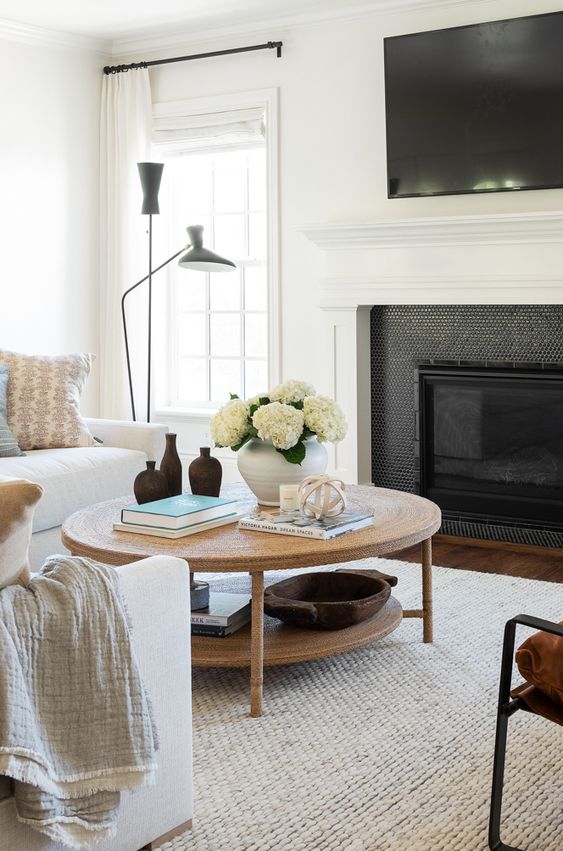
- Color Palette: Studio McGee loves a fresh and neutral color palette; shades of whites, creams, grays, natural earthy tones with subtle pops of color through accessories or muted pastels.
- Key Elements: modern and rustic elements; mixing materials and textures, natural textures like woven baskets, linen, raw woods, botanical elements.
- Approach: clean, curated and fresh aesthetic with a sense of balance and symmetry by carefully select objects of varying heights and sizes, arranging them in a way that feels harmonious and visually pleasing.
- Materials and Textures: natural materials and textures for a tactile and inviting feel.
- Arrangement: clean, simple and organized; for a balanced composition with each element having its own designated space.
Abigail Ahern
- Color Palette: Abigail loves a rich, moody color palette with deep purples, dark blues, olive greens, charcoals and pops of color.
- Key Elements: eclectic and glamorous elements using textured materials like velvet, faux fur, and embossed metals, sculptured elements and unique vintage finds.
- Approach: drama and opulence. She mixes objects to create depth and visual interest. Abigail loves breaking the rules and embracing a more unconventional approach for unique and captivating displays.
- Materials and Textures: mix of textures and materials; incorporating plush textiles like velvet, faux fur, or silk, along with rougher textures like aged woods, distressed metals, or stone.
- Arrangement: embraces asymmetry and organic arrangements. She creates visually dynamic displays by placing objects in a less predictable manner, allowing for a sense of movement and spontaneity within the arrangement.
Leanne Ford
- Color Palette: Leanne Ford loves neutral and earthy color palette, shades of whites, beiges, and warm browns with variations in tone and texture for depth and visual interest.
- Key Elements: rustic and minimalistic elements; natural materials like raw woods, organic ceramics, woven textures, found objects and vintage pieces for character and authenticity.
- Approach: a minimalistic, organic aesthetic. Simplicity and understated beauty; for a less cluttered look, selecting a few carefully curated objects to create a serene and calming display.
- Materials and Textures: natural and tactile materials; unfinished woods, distressed surfaces, woven fibers, or textured fabrics.
- Arrangement: simplicity and clean lines. Leanne arranges objects in a deliberate yet unpretentious manner, allowing each piece to have its own space.
Becki Owens
- Color Palette: Becki Owens loves a light airy color palette; shades of whites, creams, soft pastels, natural tones, pops of color.
- Key Elements: modern and natural elements, organic materials like wood, rattan, and natural fibers.
- Approach: modern, relaxed aesthetic with a clean and uncluttered look using a few key objects for a sense of casual elegance.
- Materials and Textures: natural and textural materials; woven textures, smooth ceramics, glass, or metals.
- Arrangement: simplicity and a sense of ease; casual and effortless, relaxed, uncluttered and inviting ambiance.
If you’ve made it this far, you might be interested in these commonly asked questions. Its might be a small patch in your living space, but there are always more questions about styling.
How do you style a coffee table like a designer?
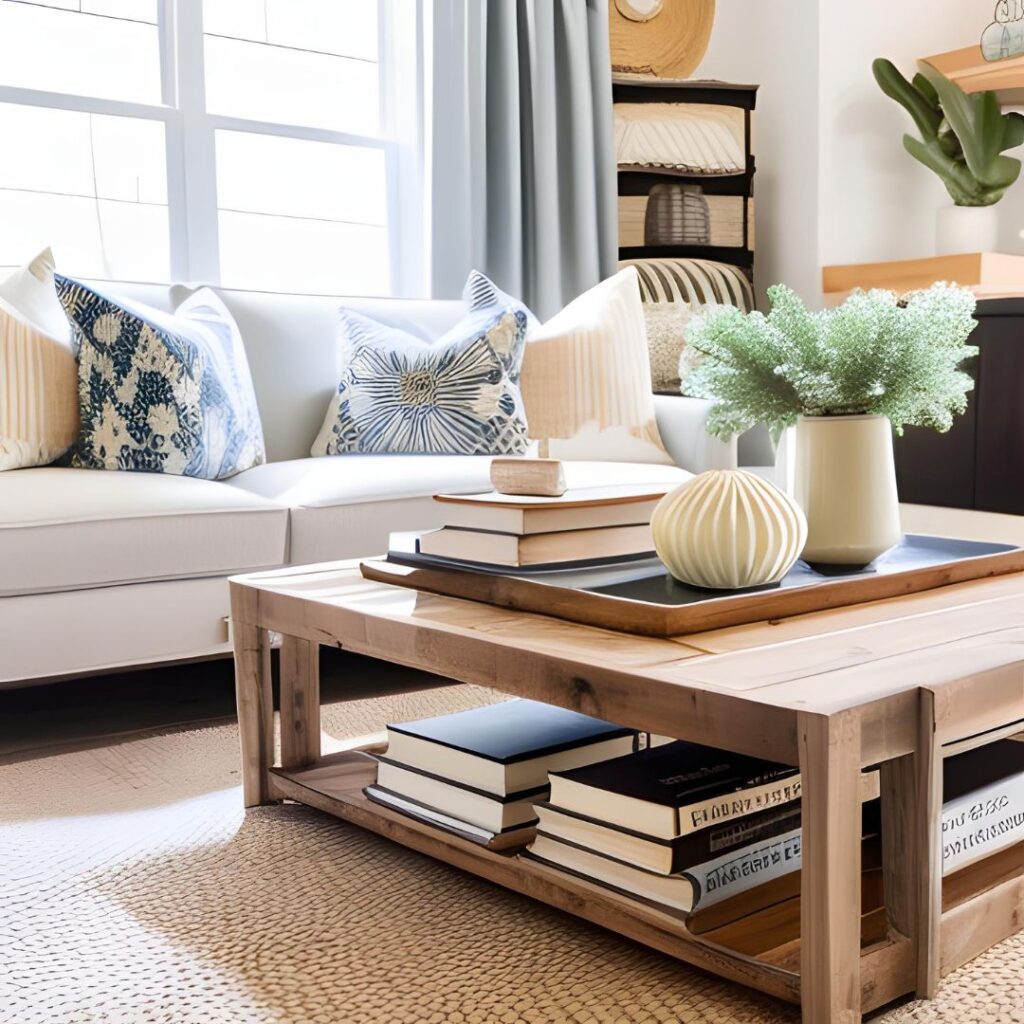
- Start with a flat surface: Use a platter, tray or other flat surface at the centre of a small to medium sized table or two on either end of a larger table. This creates a boundary to organize items.
- Mix heights and textures: Use items of varying heights and textures to add visual interest then combine accessories, vintage finds from the lists above to create a visually intereresting but uncluttered look.
- Create balance: Arrange items considering the size, shape, and color of each piece. Aim for asymmetrical balance, rather than placing identical items on each side.
- Play with scale: Use objects of different sizes. Combine larger statement pieces or a large book with smaller items.
- Use natural elements: Add natural elements such as florals, small potted plants, or a piece of driftwood to bring in some organic beauty and freshness.
- Add books: Stack books, both horizontally and vertically, to create height and a scholarly touch. Select books with interesting covers or of various colors.
- Add a personal touch: Include a personal item or sentimental collection to add your personality into your decor.
- Color scheme: Base your color palette with the overall color scheme of the room for a cohesive and harmonious look.
- Its about the negative space: Deliberately leaving gaps and empty space on the table creates a clean and uncluttered look. It allows the eye to rest and move around the items on display.
- Edit and rotate: Regularly edit and rotate the items on your coffee table to keep the design fresh and interesting.
Remember, the goal is to create a visually pleasing look that shows your personal style while still being functional for daily use.
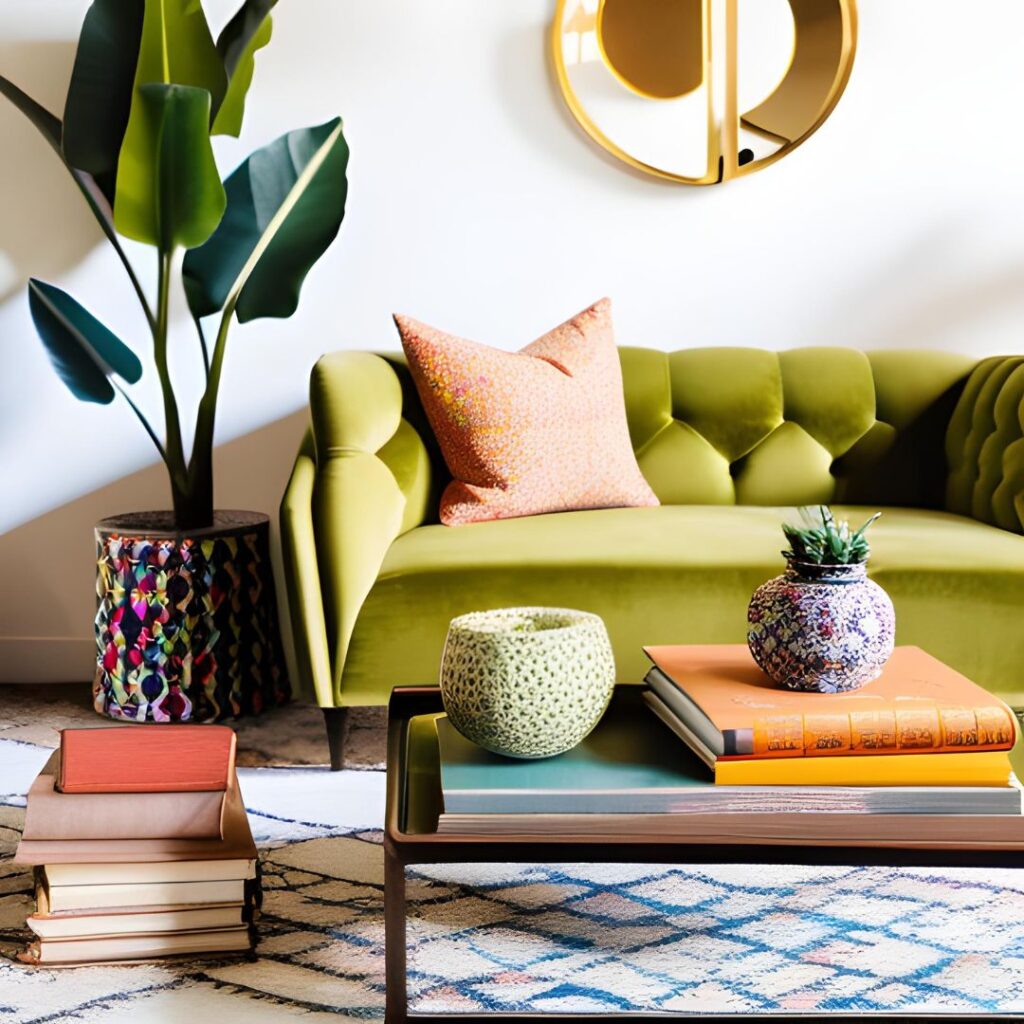
How do you style a small rectangle coffee table?
There are several ways to arrange a small rectangle coffee table.
1. Minimalist approach: Keep the table clutter-free and only place a few essential items on a small platter with a curated group of books or magazines, fresh flowers, or a single object.
2. Symmetrical arrangement: Place a pair of matching items on either end of the table to create a balanced and symmetrical look; two similar candleholders, or small sculptures.
3. Layers: Start with a table runner, platter or tray as a base, then add items of varying heights such as stacked books, a small plant, and a box or small statue.
4. Personal touch: Select items that reflect your taste or that hold sentimental value; one large item, two smaller items.
5. Functional: Use ornate storage boxes or baskets to keep remotes, coasters, or small items organized.
6. Color: build on the color scheme of your living room for a well-structured look.
Remember, the key is to strike a balance between function and your personal style. Experiment until you find a look that you love.
How do you use the rule of three when coffee table styling?
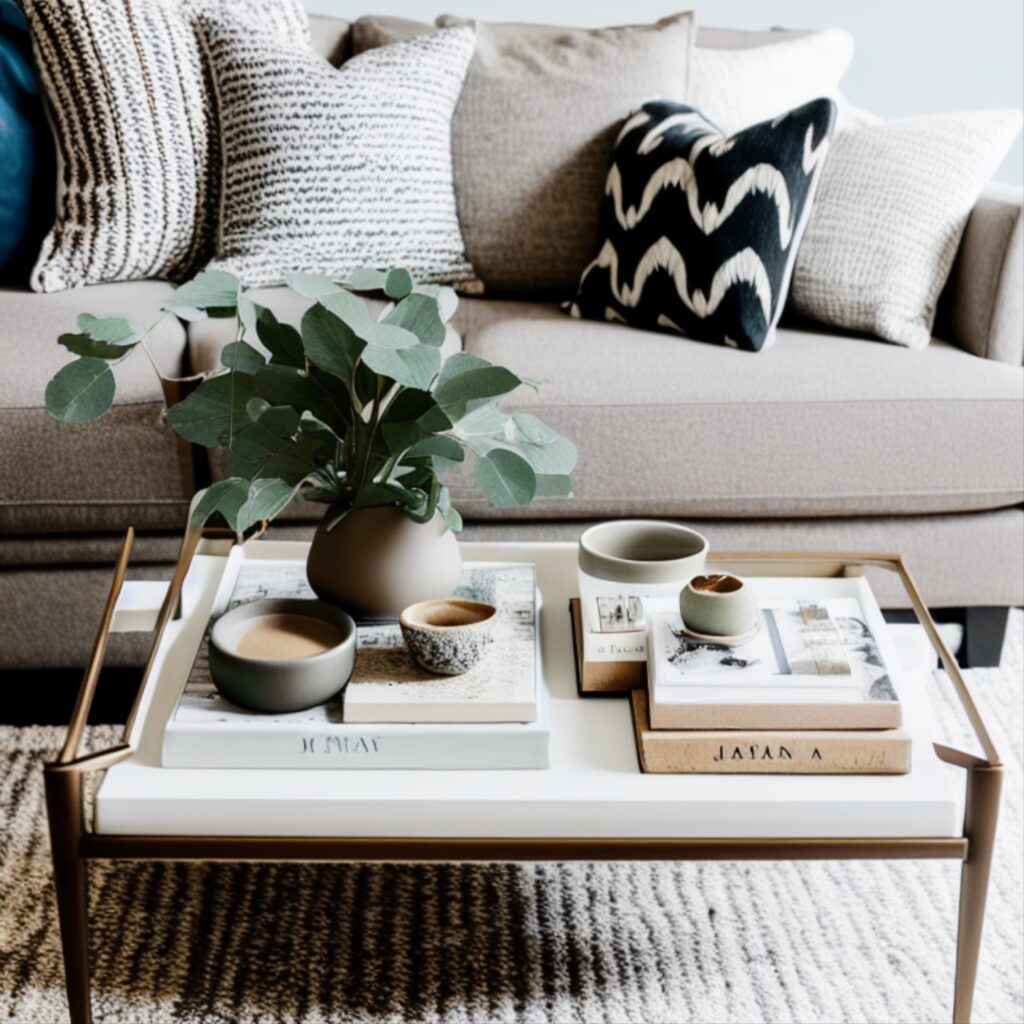
The rule of three design guideline suggests grouping objects in threes to create a visually pleasing arrangement. Follow these steps:
1. Start with a base: Select a tray or a fabric runner as the foundation to define the space.
2. Select three objects: Choose three objects that vary in height, shape, and texture. These objects could be ornaments, books, vases, candles, or plants. The idea is to have a mix of different elements for visual interest.
3. Arrange the objects in a triangular formation: Place the tallest object slightly off-center towards the back of the coffee table. This will serve as the anchor of the arrangement. Then, place the second tallest object towards the front, but slightly to the side. Finally, place the smallest object on the opposite side of the second object, completing the triangle.
4. Want more?: To add more depth, place a stack of books or a decorative box on one side of the arrangement and a vase or a plant on the other side. These additions will create visual appeal and balance.
5. Fill gaps and add accents: Fill gaps with smaller items like smaller ornaments, or bowls.
Remember to consider the scale and proportional balance of the objects so they add to the design and color scheme of the room. Play around with different arrangements until you achieve a look that is visually pleasing and harmonious.
What shape tray do you put on a rectangular coffee table?
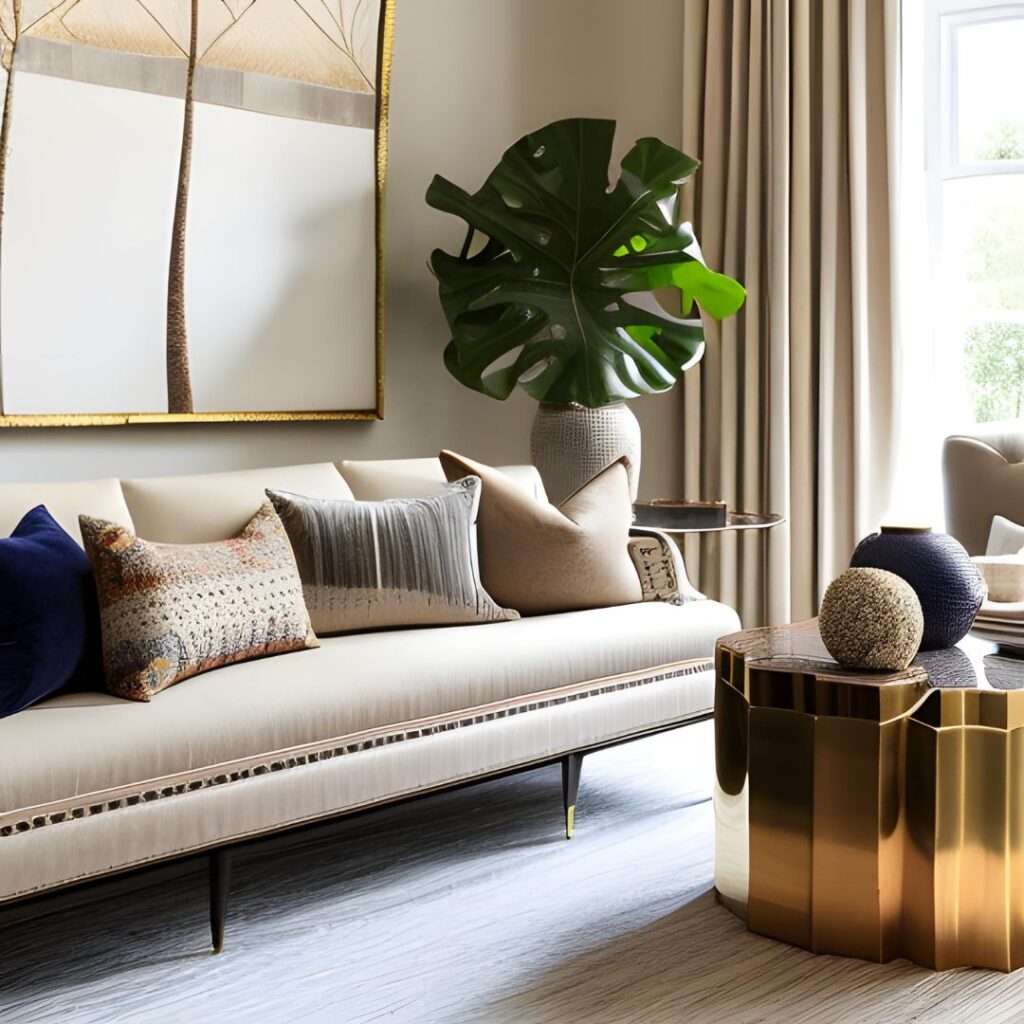
Typically, a rectangular coffee table would be best paired with a rectangular tray. However, you can also use an oval or round shape if you prefer a different shape. Ultimately, the shape depends on personal preference and the overall aesthetic you are trying to achieve.
Join our list! We are creating new products from sustainable materials, many handmade and made in the best organic materials.. come along for the journey!






